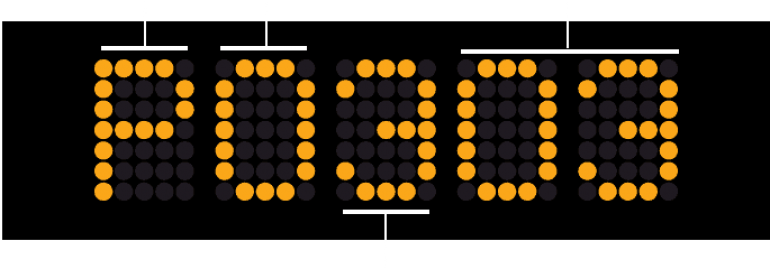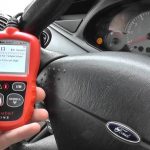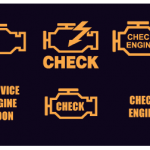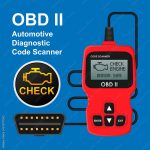
If you’re wondering what OBD error codes are, you’ve come to the right place. OBD error codes are a standardized list of trouble codes generated by a car’s self-diagnosis system. Using an autoscanner, these codes can provide important information about underlying issues. Below, we’ll discuss how to decipher the most common OBD error codes and how to troubleshoot them yourself.
OBD error codes are a list of trouble codes generated by the car’s self-diagnosis system
When a vehicle experiences an issue, its self-diagnosis system generates OBD error codes. The system transmits the trouble codes to the car’s instrument panel to signal a potential issue. The codes vary among car manufacturers and make it difficult for mechanics to diagnose the issue. To solve this problem, the Society of Automotive Engineers (SAE) standardized the diagnostic connector and the protocol that the car uses to transmit the data. The standards also standardized the messages that the system uses.
Listed below are some examples of the error codes generated by a car’s self-diagnosis system. Some codes pertain to the engine, while others relate to the body or chassis. There are also network codes that refer to communication losses or module failures. For non-powertrain codes, you will need to consult a mechanic or use a professional diagnostic scan tool.
An OBD error code is a list of trouble codes generated by the auto computer that the car uses to diagnose itself. If your car’s Check Engine Light has illuminated, you’ll need to diagnose the problem with an OBD error code. These codes are made up of letters and numbers that can identify the general issue causing the issue. These codes will also indicate where the fault is located.
They are standardized
In order to help repair shops diagnose and fix a vehicle’s on-board problems, manufacturers have created standardized OBD error codes. These codes are a collection of 5 failure modes and provide valuable diagnostic information. The third byte of an OBD error code provides more information about the fault. These codes are categorized according to severity, class, GTR specifications, and status. To help repair shops understand what a code means, they need to use the proper tools.
The OBD system began in the early 1980s. When a malfunction was detected, the car’s check engine light would turn on. Before OBD systems, the codes used by manufacturers varied greatly, which made it difficult for mechanics to diagnose problems. This problem was solved in 1996 when the OBDII specification was made mandatory for all cars. The new standard specifies the type of diagnostic connector, electrical signaling protocols, and messaging format for the system. The resulting standardized codes became more useful than ever.
There are two main types of OBD error codes. The first type is known as the generic code. This type is adopted by most car manufacturers and has a common fault message. The second type is called the manufacturer specific code and is unique to a particular model. It is important to remember that these codes are standardized so that you can determine the exact problem your vehicle is having. The DTCs can be helpful to repair your vehicle’s faults and identify the cause.
They can be read by an autoscanner
OBD error codes are displayed on a vehicle’s dashboard, indicating a malfunction. These codes can be a result of many problems, including transmission problems and air conditioning system failures. In addition, if the engine is idling improperly, the Check Engine Light will illuminate. Using an autoscanner can help you diagnose the cause of the problem, and a solution can be found before a breakdown occurs.
Using an autoscanner to diagnose OBD error codes can be tricky, especially for a layman. For instance, a faulty alternator will set multiple codes, while a worn-out one can cause multiple errors. A trained mechanic should be able to diagnose these problems accurately and recommend a fix or replacement. In many cases, an autoscanner can be an effective way to diagnose the problem and determine whether it is time to replace a part.
OBD error codes are categorized into generic and standard codes. The generic codes are known as “generic” codes, and are used by most cars. Manufacturers, however, have added their own codes, which may be called “manufacturer-specific” or “P” codes. However, the generic codes are the most common. Some of these generic codes include “P0” and “P2” while manufacturer-specific codes are called “B” and P30-P33.”
They can give information about underlying issues
Using OBD error codes to diagnose your car can help you avoid a number of expensive repairs. Depending on which code your car shows, you can get a wealth of information about underlying issues. While the first code on the dashboard indicates the most serious issue, other codes can just be symptoms. Once you fix the underlying issue, additional codes will go away. In some cases, they may even indicate a different problem altogether.
On-board diagnostic systems have been installed in cars for many years. They are computer systems that monitor your car’s performance and record problems as specific codes. By reading these codes, you can determine whether your vehicle is experiencing one of many underlying issues, from a fuel leak to a faulty braking system. If you’re not sure what a particular error code means, you can use an online database to learn more about the issues affecting your car’s performance.
When you’re using an OBD scanner to diagnose your car, you’ll see that it has two types of codes: Pending Codes and Active Codes. Pending Codes refer to errors that have occurred at least once and will become Active Codes if they occur again. In other words, if the Check Engine Light is lit, you’ve got a major problem. To repair your car, you’ll want to know what OBD codes mean.
They can reduce downtime
A lit Check Engine Light indicates a general problem, but OBD error codes are different than the diagnostic code for individual auto parts. The error codes contain letters and numbers, ranging from 0 to 99. Single numbers are 0 to 3, while the fourth and fifth characters are pairs of numbers from 00 to 99. In other words, these codes represent general system failure. Understanding what each code means before you start fixing your vehicle is essential.
The OBD-ll standard established diagnostic trouble codes to help technicians diagnose and repair failed systems. However, there are some limitations to these codes, so GM introduced the symptom byte to expand its diagnostic code base. While many manufacturers use these enhanced DTCs, others are less forthcoming with information about their use. In any case, you should check if the manufacturer of your car uses them. If so, it is likely that you are working with a reputable shop that offers a warranty.
They can be cleared by the car
In most cases, the check engine light indicates that something is wrong with the car. A system called OBD (On-Board Diagnostics) will record various codes to indicate a problem. The codes give specific clues as to what is causing the issue. The codes can be read by a diagnostic tool such as an obd-ii code reader. By knowing what the code means, you can take action to fix the problem.
Regardless of whether you are a mechanic or a DIY mechanic, clearing the codes is essential for keeping track of the condition of your vehicle. It will help you identify any patterns of malfunction or driver habits. You’ll also know if a simple fix will solve the problem. However, it’s crucial to note that a tech shouldn’t clear codes unless they are making repairs to the vehicle first.
While this may seem complicated, clearing the codes with a diagnostic tool is relatively easy. To perform this task, you must remove the battery terminals. The ECU controls every electronic gadget in the car, including the anti-theft radio system, factory alarm, and even the radio. Disconnecting the power will reset the settings for all of these electronic systems. It will also reset any settings in the clock, automatic transmission, power seat, and memory.






